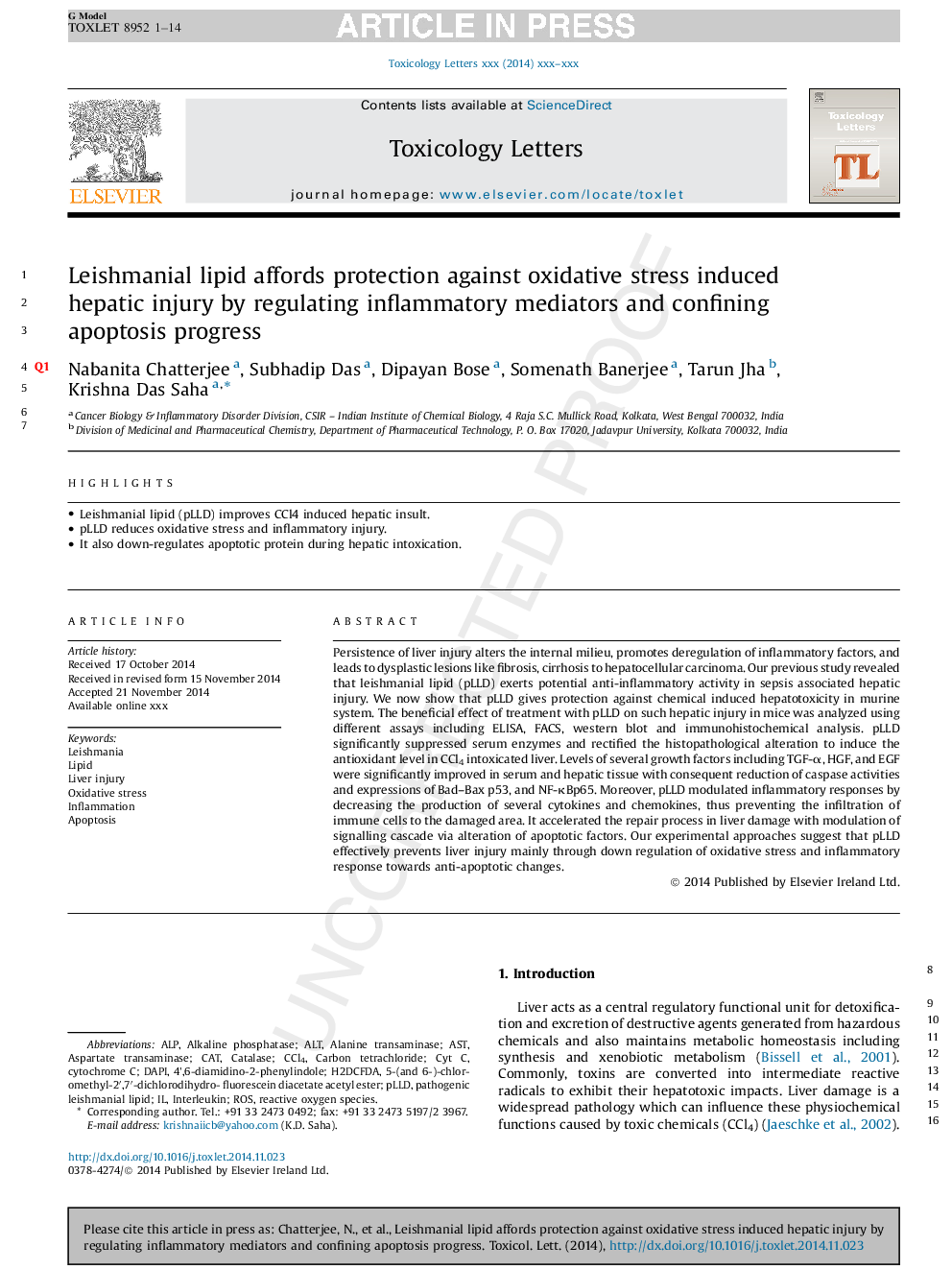| Article ID | Journal | Published Year | Pages | File Type |
|---|---|---|---|---|
| 5860003 | Toxicology Letters | 2015 | 14 Pages |
Abstract
Persistence of liver injury alters the internal milieu, promotes deregulation of inflammatory factors, and leads to dysplastic lesions like fibrosis, cirrhosis to hepatocellular carcinoma. Our previous study revealed that leishmanial lipid (pLLD) exerts potential anti-inflammatory activity in sepsis associated hepatic injury. We now show that pLLD gives protection against chemical induced hepatotoxicity in murine system. The beneficial effect of treatment with pLLD on such hepatic injury in mice was analyzed using different assays including ELISA, FACS, western blot and immunohistochemical analysis. pLLD significantly suppressed serum enzymes and rectified the histopathological alteration to induce the antioxidant level in CCl4 intoxicated liver. Levels of several growth factors including TGF-β, HGF, and EGF were significantly improved in serum and hepatic tissue with consequent reduction of caspase activities and expressions of Bad, Bax, p53, and NF-κBp65. Moreover, pLLD modulated inflammatory responses by decreasing the production of several cytokines and chemokines, thus preventing the infiltration of immune cells to the damaged area. It accelerated the repair process in liver damage with modulation of signalling cascade via alteration of apoptotic factors. Our experimental approaches suggest that pLLD effectively prevents liver injury mainly through down regulation of oxidative stress and inflammatory response towards anti-apoptotic changes.
Keywords
Related Topics
Life Sciences
Environmental Science
Health, Toxicology and Mutagenesis
Authors
Nabanita Chatterjee, Subhadip Das, Dipayan Bose, Somenath Banerjee, Tarun Jha, Krishna Das Saha,
